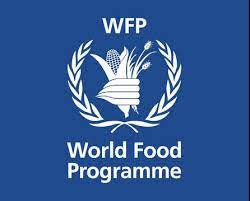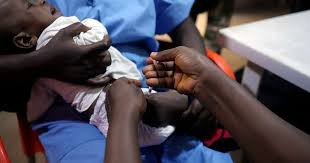
THE World Food Programme (WFP) has given 635 tablets to Agricultural Extension (Arex) workers throughout the country to help them be more effective in their work.
AREX falls under the Agricultural Advisory and Rural Development Services (AARDS).
The gadgets will also assist farmers to be more productive and viable through improved extension access.
WFP head of programmes Roberto Borlini told journalists yesterday at the handover ceremony that the devices will be used by extension workers to gather crucial information throughout the year in rural and urban areas.
“Today, we are transferring a total of 635 android devices that will be utilised nationwide by the Agricultural Advisory and Rural Development Services staff to implement activities in co-ordination with the World Food Programme. These devices will be used by AARDS extension staff to perform a number of different tasks in support of rural development activities.
“Other staff will be able to gather crucial information throughout the year from rural and urban markets in Zimbabwe monitoring prices and vulnerability of different commodities, information will be shared widely with government and development partners to a variety of platforms like the food and livelihood security cluster to support in programme planning,” he said.
He said other extension officers would be able to receive relevant and location-specific climate information through the gadgets to disseminate it to farmers in a bid to improve decision-making on the crops and livestock options for the season.
AARDS chief director Obert Jiri said government had taken a stance to embrace e-commerce in the agricultural sector.
- Govt to distribute grain as hunger stalks millions
- Zim’s urbanites facing high prices
- 3,8m villagers face hunger
- Food crisis looms in Sadc
Keep Reading
“Moving with time, we need to navigate. It means great investment in terms of the hardware of the digital assets: It means training and retraining of our personnel to be able to utilise the same. So, what we are seeing here is evidence that it is possible to really transform our extension services through digital means and we need to embrace ICTs to use them in agriculture,” he said.
“We have a few efforts that we have done including trying in our humble way to go into e-extension which means transmitting our extension messages through e-platforms. So, we do use other platforms like Twitter and we have recently done our agriculture tips to get information to the farmers.”
Early this year, WFP disclosed that US$2,1 million in cash-based transfers was disbursed to distressed people between July and December last year.
Climate-related hazards, including droughts, prolonged mid-season dry spells, flash floods, cyclones, pests and diseases have negatively affected vulnerable people in Zimbabwe.
In its recent annual country report, WFP said it continued to strengthen its partnerships with government and various players to advance sustainable development goal objectives.
The United Nations agency, the world’s largest humanitarian organisation, has a comprehensive country strategic plan covering the period July 2022 to December 2026 providing a roadmap to consolidate promotion of shock-responsive social protection and sustainable and resilient food systems.
According to WFP’s annual report, 12 519 tonnes of food were distributed to support vulnerable communities.
This comes after the organisation spent at least US$40 million assisting 700 000 vulnerable communities around the country during the lean season, a period between planting and harvesting when food stocks dwindle and vulnerable families often skip meals.






